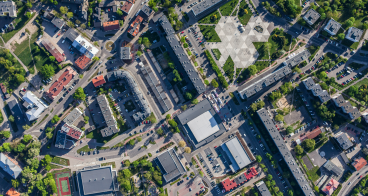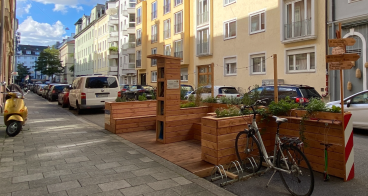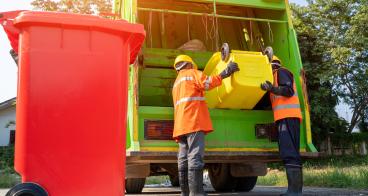Transforming wind turbine waste into sustainable urban solutions
Tackling the escalating wind turbine waste crisis is crucial for a sustainable future. With an estimated 43M.t of waste blades by 2050, two initiatives for repurposing waste into urban furniture offer hope.
The rapid growth of wind energy has resulted in a mounting waste management challenge with wind turbine blades reaching the end of their lifespan. New ground-breaking initiatives repurpose discarded blades into functional structures like playgrounds, street furniture, and bridges, reducing CO2 emissions and landfill waste, thus diverting from the default landfill and incineration destiny.
Giving New Life to Discarded Blades
Architect Jos de Krieger, co-founder of Blade–Made, highlights the significant challenge posed by the annual replacement of approximately 100 to 150 wind turbines in the Netherlands, resulting in the disposal of 400 rotor blades. Nevertheless, a promising solution lies in repurposing these blades, which can lead to a remarkable outcome. By transforming them into useful components, such as playgrounds, bus shelters, pedestrian bridges, and street furniture, we have the potential to contribute up to 5% of the total production required for sustainable urban development. This approach not only addresses the waste issue but also plays a crucial role in promoting environmentally friendly practices. In fact, repurposing wind turbine blades can save an impressive 90% of CO2 emissions that would otherwise be generated from producing new materials - a promising step towards a more sustainable future for our cities.
Advancing Sustainable Infrastructure
Another Irish initiative, BladeBridge, involves the utilisation of donated wind turbine blades that would otherwise be disposed of at significant cost to windfarm operators. By providing an environmentally friendly and cost-efficient method for blade removal and reutilisation, this initiative addresses the pressing issue of blade waste management. The Irish initiative currently offers two specific repurposing ideas to combat wind turbine blade waste and reduce carbon emissions:
- Transmission Towers: In the US, the installation of numerous transmission towers presents an excellent opportunity to reuse wind turbine blades as materials. This creative solution not only diverts blades from landfills but also provides a sustainable alternative for tower construction.
- Pedestrian Bridges in Ireland: With Ireland experiencing a surge in cycleway construction, the need for bridges is growing rapidly. By utilising repurposed wind turbine blades instead of traditional steel girders, carbon emissions can be reduced by 20-30% compared to conventional bridges. With the planned 3500 km of greenways in Ireland's National Cycling Network, there is a potential requirement for 1000 additional bridges, making BladeBridge's solution even more valuable.
In collaboration with the MaREI research center, UCC, and partners from Ireland, Northern Ireland, and the US, BladeBridge achieved a remarkable feat with their pilot project. The project involved constructing a 6m blade bridge along the Midleton to Youghal greenway. What made this project truly innovative was the use of decommissioned wind farm blades from Belfast. This sustainable approach not only allowed for the repurposing of these blades but also resulted in avoiding nearly 800 kilograms of CO2 emissions when compared to traditional steel girders. In January 2022, the BladeBridge team managed to complete the bridge installation in just 4 days, showcasing the efficiency and effectiveness of their approach. This achievement represents a significant step forward in the development of environmentally friendly infrastructure solutions.
Both Blade-Made and BladeBridge exemplify the power of creativity and innovation in tackling environmental challenges. As we continue to embrace renewable energy sources like wind power, it becomes crucial to invest in sustainable waste management practices. These initiatives show that with ingenuity, collaboration, and a commitment to sustainability, we can establish a circular economy and turn waste into valuable resources for a greener and cleaner future.
Learn more about alternative methods for sustainable urban space design by accessing the shared files section below.
Zehra Nur Simsek is a senior student at Koç University, pursuing a dual major in Economics and History. With a passion for addressing global challenges, I regularly create content on the climate crisis, social entrepreneurship, and sustainability on my LinkedIn profile.
Published on 08 Aug 2023.






